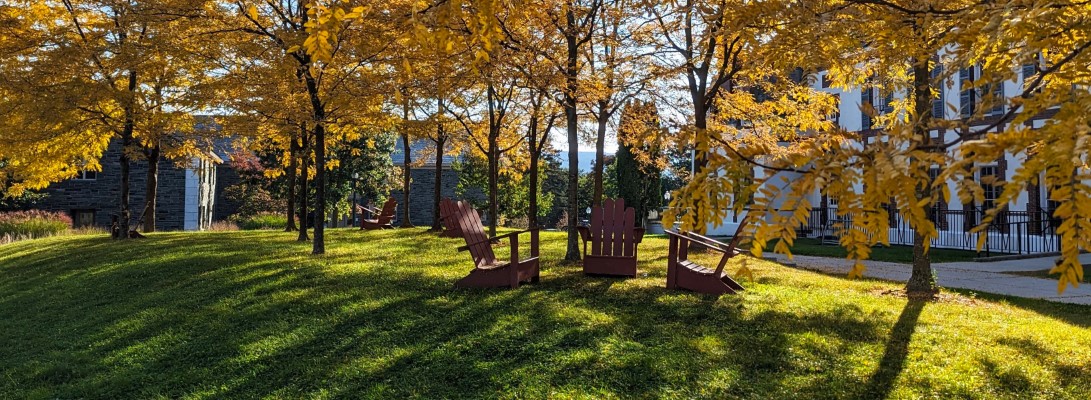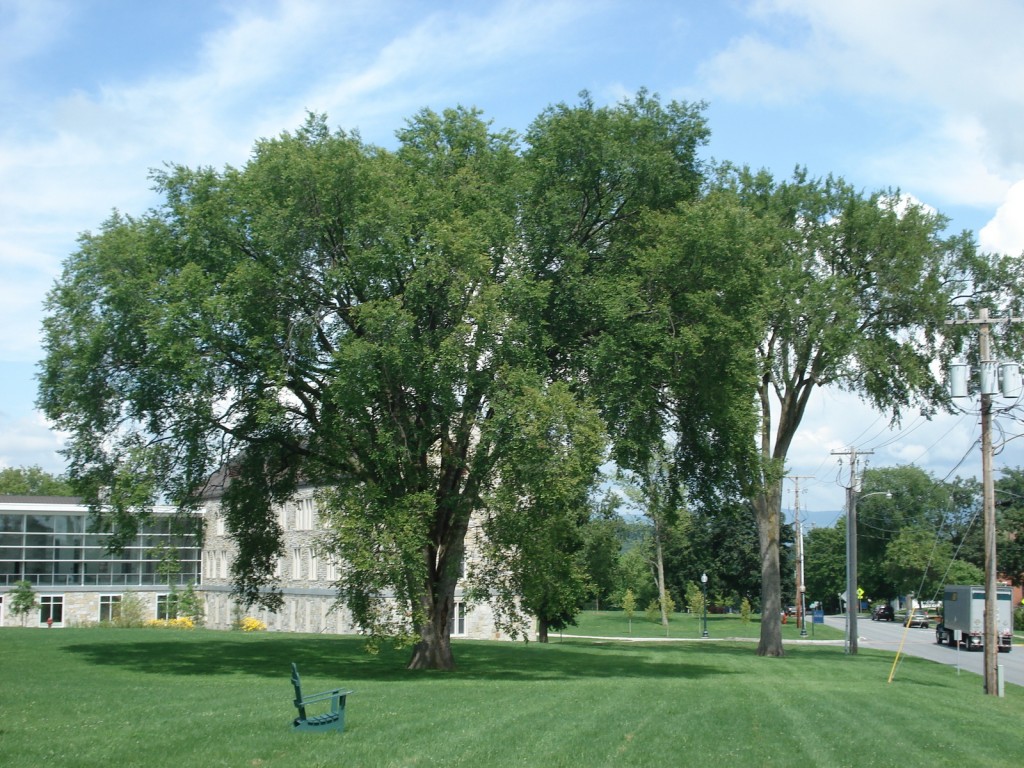Among various tree geeks in New England Middlebury is well known for our Heritage Elm Collection. Elms, of course, naturally succomb to Dutch Elm Disease if we humans aren’t very proactive. We treat 28 old Elm trees, some of which are over 150 years old. I’ve written a couple new pages on them, one a general overview of all of the elms, one a brief primer on Dutch Elm disease and how we maintain the trees, and a final page on the history of the elm tree at Middlebury.
Elms have that classic umbrella shape, but can vary from specimen to specimen. We are fortunate to have trees in a wide variety of sizes and shapes, from the low spreading type like the Dog Elm behind Munroe (yes, we’ve named some of them), to the spectacular high and arching Field House elm. We also have been planting disease resistant varieties, such as Accolade Elm.
I remember a conversation with one of our seasonal employees several years ago, and we were discussing the difference between botany and horticulture. He cited the elm as a good example. Botanically, we will always have elm trees. They don’t die from Dutch elm disease until past their reproductive years, so they will always set seed and produce more young. And looking at them from a geological time perspective, eventually they will develop resistance, although that may be many millennia. Horticulture, though, is as much art as science, and as horticulturists we preserve some of the grandeur of an old elm, and we remember the dignity of the old shade tree as it was, even as we work towards bringing them back.

